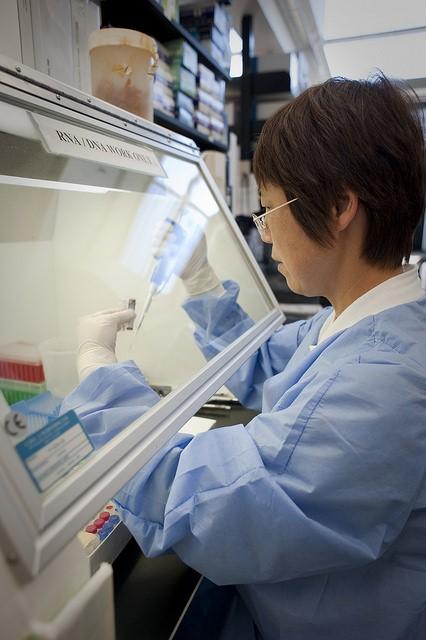Federal health officials today spelled out a strategy for developing a universal flu vaccine that includes a profile of what such a vaccine would accomplish and the different research areas that scientists would need to tackle to bring more protective vaccines for seasonal and pandemic influenza to market.
A team from the National Institute of Allergy and Infectious Diseases (NIAID), led by its director, Anthony Fauci, MD, based the plan on discussions from a workshop convened in June 2017. They published the strategy today in the Journal of Infectious Diseases.
The plan's release comes amid a tough flu season dominated by the problematic H3N2 strain, which again laid bare gaps in protection with most currently available vaccines. Suboptimal protection by flu vaccines and the desire for better ones that can provide long-lasting protection against a range of strains, even a new pandemic one, has also caught the attention of a group of US senators. On Feb 15 they proposed a law what would invest $1 billion in research over the next 5 years to create a universal flu vaccine, which some experts have said is helpful but falls short of what's needed.
Though today's strategy didn't include a price tag for developing a universal flu vaccine, it does sketch out what one might look like and the key research steps needed to accomplish the goal.
A wish list and research goals
The strategy lays out four main criteria for a universal flu vaccine: it should be at least 75% effective, protect against group 1 and group 2 influenza A viruses (influenza B would be a secondary target), protect for at least 1 year, and be suitable for all age-groups.
Also, NIAID's strategy focuses on three main areas of flu research:
- Transmission, natural history, and pathogenesis using prospective cohorts
- Influenza immunity and correlates of protection
- Strategies in vaccine design to prompt broad, protective immune responses
Under each of the three research areas, the strategy has several objectives. For example, under the first area, the group said there are still unanswered questions about the contributions of aerosols, droplets, and fomites in the spread of flu. The authors also said a clearer understanding what drives disease severity might shed light on new approaches to developing better vaccines.
Regarding the goal of more precisely characterizing influenza immunity and correlates of protection, the group said the role of T cell-mediated immunity has received little research attention, but it may offer another pathway for broad protection in a universal vaccine.
As part of that, Fauci and his colleagues wrote that immunity research would also explore host factors, such as how childhood exposure to flu strains might afford some protection against exposure to later similar strains, a process known as "immunologic imprinting."
And finally, research into the design of universal flu vaccines would involve incremental advances to improve seasonal flu vaccines, such as including additional antigens or adjuvants. Such research would also look toward new vaccine candidates that might come from new understanding of humoral and T cell responses.
New approaches might also include new immunogens that prompt wider protection, given that current vaccines focus on the head of the virus glycoprotein, an area known for its continuous evolution. Instead, universal vaccines might have more stable or conserved targets, such as the hemagglutinin stem, the viral neuraminidase, the ectodomain of the ion channel M2, or the internal viral proteins.
Earmarking resources for research, development
NIAID's strategy also detailed research resources and other tools needed to advance work on better flu vaccines, including more useful animal models, longitudinal research cohorts, increased capacity for human challenge studies, and systems biology methods.
See also:
Feb 28 J Infect Dis abstract
Feb 28 NIH press release
Feb 19 CIDRAP News story "Senate bill would jump-start universal flu vaccine efforts"




















